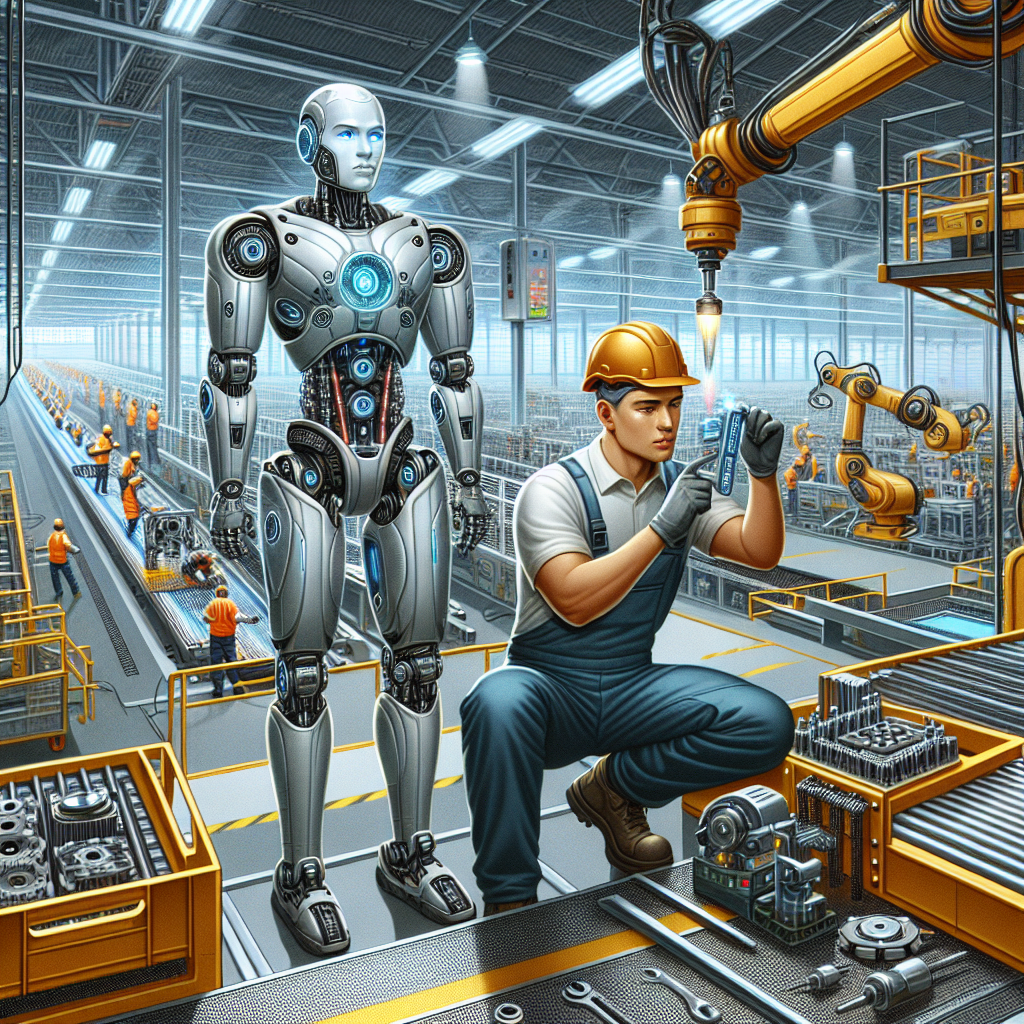Artificial Intelligence (AI) and robotics have revolutionized the manufacturing industry in recent years. The integration of AI with robots has led to significant advancements in efficiency, accuracy, and productivity in manufacturing processes. This collaboration between humans and robots has transformed the way products are made, leading to a more streamlined and cost-effective manufacturing process.
AI in manufacturing involves the use of algorithms and machine learning to analyze data and make decisions in real-time. This allows robots to perform tasks with a level of precision and speed that is unmatched by human workers. AI also enables robots to adapt to changing conditions and optimize their performance based on feedback from sensors and other sources.
Human-robot collaboration in manufacturing combines the strengths of both humans and robots to create a more efficient and productive work environment. While robots excel at repetitive, high-precision tasks, humans bring creativity, problem-solving skills, and adaptability to the table. By working together, humans and robots can achieve higher levels of productivity and quality than either could on their own.
One of the key benefits of human-robot collaboration in manufacturing is increased efficiency. Robots can perform tasks with a level of consistency and accuracy that is impossible for humans to achieve. This allows manufacturers to produce products at a faster rate and with fewer defects, leading to lower production costs and higher profits. Human workers can focus on more complex tasks that require creativity and problem-solving skills, while robots handle the routine, repetitive tasks.
Another benefit of human-robot collaboration in manufacturing is improved safety. Robots can be used to perform dangerous tasks that may put human workers at risk, such as handling heavy machinery or working in hazardous environments. By delegating these tasks to robots, manufacturers can reduce the risk of workplace accidents and injuries, creating a safer work environment for their employees.
Furthermore, human-robot collaboration in manufacturing can also lead to greater flexibility and agility in production processes. Robots can be reprogrammed quickly and easily to adapt to changing production demands, allowing manufacturers to respond to market trends and customer preferences more efficiently. This flexibility enables manufacturers to produce customized products in smaller batch sizes, reducing inventory costs and speeding up time to market.
Despite the many benefits of human-robot collaboration in manufacturing, there are also challenges that need to be addressed. One of the main challenges is the fear of job loss among human workers. As robots become more advanced and capable of performing a wider range of tasks, there is a concern that they will replace human workers in the manufacturing industry. However, research has shown that human-robot collaboration actually creates new job opportunities for human workers, as they are able to focus on higher-level tasks that require human skills and creativity.
Another challenge is the need for proper training and education for human workers to adapt to working alongside robots. Human workers need to be trained on how to operate and interact with robots safely and effectively. This includes understanding how to program robots, troubleshoot issues, and collaborate with them in a way that maximizes productivity. Manufacturers need to invest in training programs for their employees to ensure a smooth transition to a human-robot collaboration environment.
In conclusion, AI and human-robot collaboration have the potential to revolutionize the manufacturing industry by improving efficiency, safety, and flexibility in production processes. By combining the strengths of humans and robots, manufacturers can achieve higher levels of productivity and quality while creating a safer and more dynamic work environment. While there are challenges to overcome, the benefits of human-robot collaboration far outweigh the risks, making it a promising avenue for future advancements in manufacturing.
FAQs:
Q: Will human workers be replaced by robots in the manufacturing industry?
A: While robots are becoming more advanced and capable of performing a wider range of tasks, human workers will not be replaced entirely. Human-robot collaboration in manufacturing creates new job opportunities for human workers, as they can focus on higher-level tasks that require human skills and creativity.
Q: How can manufacturers ensure the safety of human workers when working alongside robots?
A: Manufacturers need to implement proper training programs for their employees to ensure they know how to operate and interact with robots safely. This includes understanding how to program robots, troubleshoot issues, and collaborate with them in a way that maximizes productivity.
Q: What are some of the benefits of human-robot collaboration in manufacturing?
A: Some benefits of human-robot collaboration in manufacturing include increased efficiency, improved safety, greater flexibility and agility in production processes, and the ability to produce customized products in smaller batch sizes. By combining the strengths of humans and robots, manufacturers can achieve higher levels of productivity and quality in their production processes.

